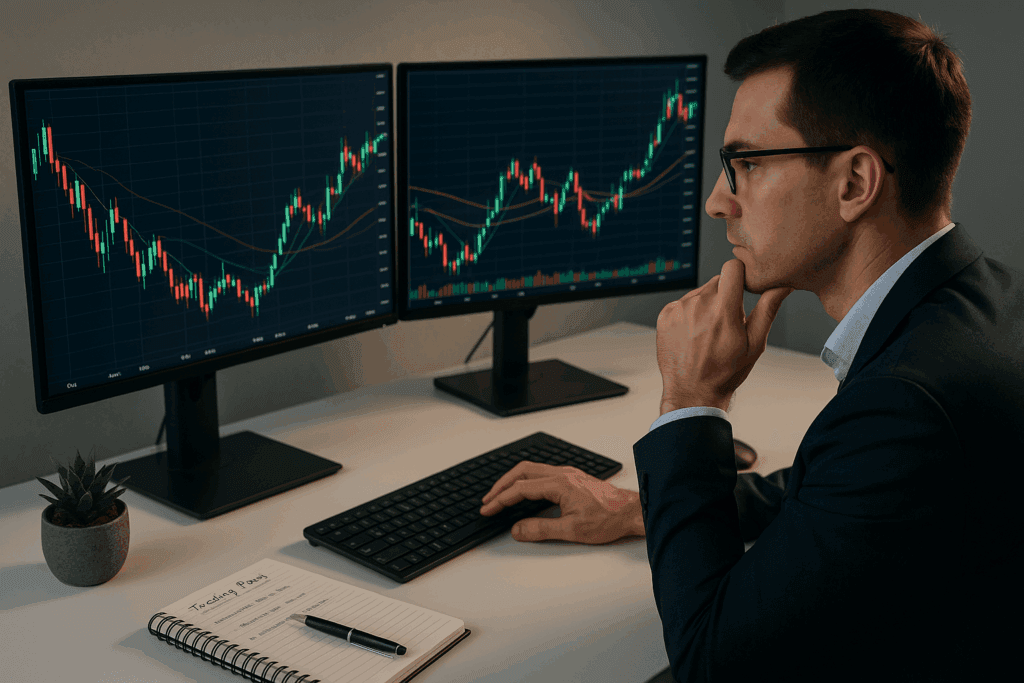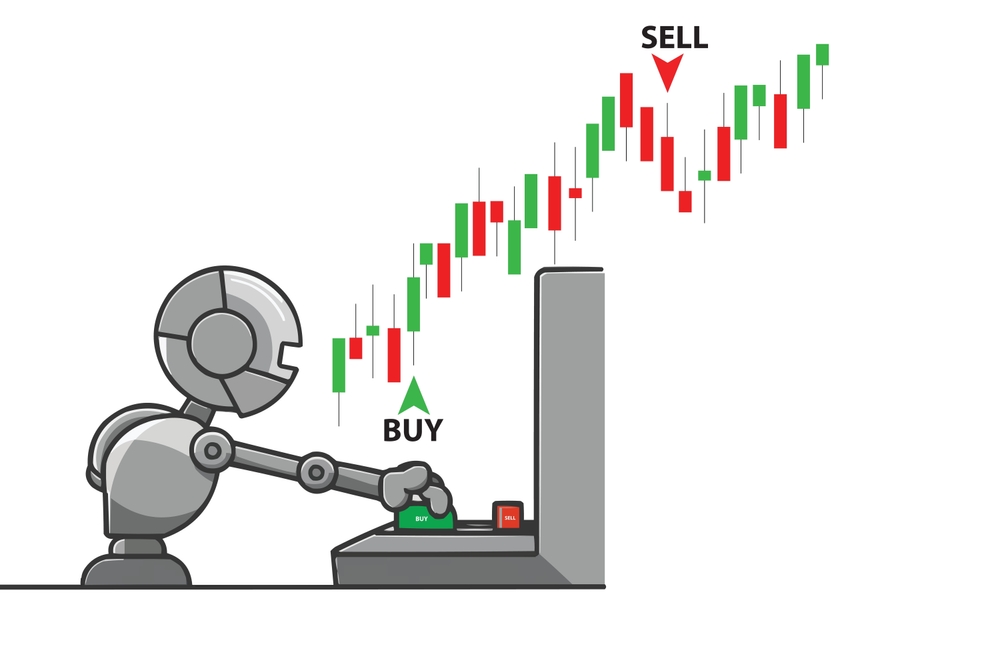
Introduction
Many aspire to generate income through trading, especially those considering it as their primary source of revenue. However, mastering the art of trading requires a combination of proper education, strategic skills, and disciplined execution. This comprehensive guide outlines the critical steps and insights to help beginners navigate the path toward profitable trading.
The financial markets offer substantial rewards but come with significant risks. Poor risk management can quickly deplete your capital and lead to consecutive losses. Conversely, proper risk control significantly enhances your chances of success.
For those beginning their journey toward becoming a consistently profitable trader:
- Developing a well-defined trading plan is essential—identifying strategies aligned with your risk tolerance and financial objectives
- A robust plan guides all buying and selling decisions, maintaining stability even during volatile market conditions
- Mastering market trend analysis, technical analysis tools, and identifying high-probability setups plays a crucial role in long-term profitability
Understanding the Basics of Trading
Before diving into profit-making strategies, it’s important to grasp the fundamentals. Trading involves buying and selling financial instruments like stocks, currencies, or commodities to profit from price fluctuations.
The financial marketplace encompasses various markets including stocks, forex, and commodities—each with unique characteristics requiring specific knowledge and approaches for success.
To begin trading, individuals must establish a trading account funded with capital designated for trading activities. It’s vital to remember that trading inherently involves risk, and you should only risk capital you can afford to lose.
What is Trading and How Does it Work?
Trading is the process of exchanging financial assets in various markets with the goal of capitalizing on price movements. These markets serve as platforms where traders can exchange different instruments and attempt to profit from price fluctuations.
In stock markets, traders deal with company shares available for public purchase and sale. The forex market involves currency pair trading, where profits derive from movements in exchange rates. The commodities market focuses on physical goods like precious metals, energy resources, and agricultural products.
To participate in trading, one must first open a trading account with a brokerage firm and deposit funds to finance trading activities. While the potential for profit exists, trading carries inherent risks, making it crucial to only risk capital you’re prepared to lose.
Different Types of Markets – Stocks, Forex, Commodities
The trading world offers several distinct marketplaces:
Stock Market: Here, investors trade shares of publicly-listed companies. This market’s popularity stems from its diverse opportunities for profit through price speculation or investment in index funds that track multiple stocks simultaneously.
Forex Market: The foreign exchange market enables currency trading, where profits come from fluctuations in currency pair values. This global marketplace operates continuously, offering 24-hour trading opportunities during weekdays.
Commodities Market: This venue deals with tangible goods such as gold, oil, and agricultural products. Trading in this market involves anticipating how supply constraints or significant news events might impact commodity prices.
Each market presents its own characteristics and regulations but offers unique opportunities for profit when approached with knowledge and strategy.
Preparing to Trade
Proper preparation is critical before entering the trading arena. This includes acquiring necessary tools and resources and establishing your trading account.
For newcomers, education is paramount. Investing time in reading trading literature, attending workshops, and learning from experienced traders will help you understand market mechanics and develop effective trading strategies.
A demo account represents an invaluable resource for beginners. These practice platforms allow you to experience trading without financial risk—perfect for honing skills, experimenting with strategies, and building confidence before transitioning to live trading.
When ready to trade with real capital, establishing a live account becomes the next step. This process involves funding your account and selecting a broker offering the features and support necessary for your trading requirements.
Essential Tools and Resources for Beginners
New traders should equip themselves with these fundamental tools and resources to enhance skills and improve chances of success:
Trading Literature: A wealth of books covers everything from technical analysis fundamentals to trading psychology. These resources provide valuable insights and guidance for developing robust trading methodologies.
Demo Account: This risk-free practice environment allows beginners to familiarize themselves with trading platforms without financial exposure. It’s an excellent vehicle for testing strategies, becoming comfortable with various trading interfaces, and building confidence without the pressure of potential losses.
Trading Journal: Maintaining detailed records of your trades helps track performance, identify patterns in successful and unsuccessful trades, and understand your decision-making process. This practice fosters discipline and continuous improvement.
Technical Analysis Education: Study of this discipline enhances your ability to interpret price charts, understand indicators, and recognize patterns—all crucial skills for making informed trading decisions.
Setting Up Your Trading Account
Establishing a trading account is a critical step for beginners. This process involves selecting a reputable broker and allocating trading capital to an active account.
When choosing a broker, evaluate their reputation, platform functionality, fee structure, and customer support. Look for a user-friendly interface that provides comprehensive analytical tools and resources for informed decision-making.
After selecting your broker, you’ll need to fund your trading account. The amount should align with your risk tolerance and trading strategy. Ensure your capital is sufficient to withstand potential losses without complete account depletion.
Adequate capitalization is crucial not only for absorbing losses but also for capitalizing on opportunities as they arise without overexposing yourself on individual trades.
Step-by-Step Guide to Profitable Trading
Successful trading requires a structured approach that helps you understand markets and develop your trading skills.
Here’s a systematic pathway to begin your trading journey:
Step 1: Educate Yourself on Market Analysis
The foundation of profitable trading begins with learning market analysis techniques. This includes mastering technical analysis, studying historical data, and understanding price action to identify market trends and patterns.
Technical analysis involves examining price charts and utilizing various tools and formations to predict future price movements. By analyzing historical patterns and recurring formations, traders can make educated predictions about potential price directions.
Price action trading focuses on observing raw price movements without relying on supplementary indicators. This approach involves recognizing how buyers and sellers interact by identifying key price levels that act as support (where prices tend to stop falling) and resistance (where prices typically struggle to rise further).
Developing proficiency in both technical analysis and price action strategies significantly improves your probability of successful trades by basing decisions on informed analysis rather than speculation.
Step 2: Choose Your Trading Style
Selecting an appropriate trading style is crucial for profitability. Options include day trading, swing trading, and position trading—each with distinct methodologies and time commitments.
Day trading involves opening and closing positions within the same trading day. This approach aims to profit from small price fluctuations that occur throughout daily sessions, ensuring all positions are closed before market close.
Swing trading requires more patience, with positions held for several days or weeks. This method seeks to capture larger price movements over time, focusing on trends and potential reversal points.
Your choice should align with your personal circumstances—available time, risk appetite, and temperament. It’s essential that your selected style matches your personality, objectives, and trading strategies for approaching the markets.
Step 3: Practice with a Demo Account
Before risking real capital, practicing with a demo account is an essential step. This simulation allows you to test your trading strategies and develop your skills without financial risk.
For beginners, demo trading provides a valuable opportunity to build confidence in executing trades. You can experiment with various approaches and assess performance without concern for monetary losses.
A demo account also familiarizes you with the trading platform’s functionality, introducing you to available tools and features.
This practice period helps refine your trading abilities and identify areas needing improvement while adequately preparing you for the transition to live trading with actual stakes.
Step 4: Start Small and Scale Gradually
When beginning actual trading, it’s prudent to start with modest positions and incrementally increase your exposure. Position sizing is critical for minimizing risk and preventing substantial losses. By risking only a small percentage of your trading capital per trade, you can avoid significant drawdowns.
Focus on managing a single trade at a time initially. This concentration enables better focus and decision-making. Managing multiple simultaneous positions can create confusion and lead to poor trading choices.
Consider longer timeframes like daily or weekly charts for your analysis. These provide broader market perspective and reduce the influence of minor market fluctuations on your strategy. This approach promotes better decision-making by avoiding impulsive reactions to short-term price movements.
Remember that trading success is a marathon, not a sprint. Starting conservatively allows space for learning and developing the essential skills needed for effective trading strategies, with the goal of achieving consistent profitability long-term.

Risk Management Strategies
For traders seeking financial market success, effective risk management is foundational. This discipline involves implementing various techniques to limit potential losses and protect trading capital.
The cornerstone of risk management includes establishing clear profit targets and loss limits. This means determining the desired return for each trade and the maximum acceptable loss. With these parameters defined, every position reflects a calculated balance between potential gain and loss.
Stop loss orders represent another vital risk management tool. These predetermined price points automatically trigger position closure, preventing further losses. Consider them emergency exits that prevent bad situations from deteriorating further, protecting your account from excessive damage.
Adhering to these risk management principles not only safeguards your investment but also enhances your probability of long-term trading success.
Setting Realistic Profit Goals and Loss Limits
In trading, establishing concrete profit objectives and loss thresholds is essential for effective risk management. Profit goals represent target earnings from individual trades, while loss limits function as protective boundaries preventing excessive capital depletion.
When establishing these parameters, the risk-reward ratio serves as a valuable metric. This comparison between potential profit and possible loss helps determine whether a trade offers favorable odds. Positions with higher potential gains relative to potential losses generally represent more attractive opportunities.
Loss limits protect trading capital by establishing maximum acceptable losses per trade. These safeguards help maintain account balance stability and prevent emotion-driven decisions during unfavorable market movements.
Your targets should align with both your trading plan and personal risk tolerance. This disciplined approach enhances your prospects for sustained success by balancing profit potential with capital preservation through solid risk management.
Importance of Stop Loss in Trading
Stop loss orders play a critical role in trading risk management. These automated safeguards activate at predetermined price levels, ensuring losses remain within acceptable limits.
Their significance stems from their ability to protect trading capital and facilitate risk management. With stop losses in place, potential losses become quantifiable from the outset, capping exposure and preventing significant account balance fluctuations. This certainty helps avoid panic-induced decisions during adverse market conditions.
These protective measures enforce trading plan discipline by establishing predetermined exit points when market conditions become unfavorable. They prevent further losses and preserve capital for future opportunities when market conditions may be more favorable.
Incorporating these protective mechanisms significantly improves long-term success probability while providing defense against unexpected market downturns—preserving both financial resources and psychological well-being.
Reviewing and Adjusting Your Strategy
Maintaining trading success requires periodic evaluation and modification of your approach. Markets continuously evolve; strategies effective today may become obsolete tomorrow. Embracing flexibility and adaptability ensures your methodology remains relevant regardless of market conditions.
Performance analysis forms a critical component of strategy review. This involves documenting trades in a journal and monitoring metrics like win rate, average profit/loss per trade, and overall performance. Analyzing this data reveals trends and identifies strengths and weaknesses in your trading approach.
Recognizing when strategy adjustments become necessary is equally important. Market condition changes, new trading instrument availability, and personal skill development may all warrant methodology refinements. Embracing change positions you firmly on the path toward trading success.
Conclusion
To succeed as a profitable trader, you must thoroughly understand trading fundamentals, implement a clear strategy, and practice disciplined risk management. Continuous education, starting with modest positions, and regularly evaluating your approach are essential practices. Given trading’s inherent volatility, maintaining realistic profit expectations and loss limitations is crucial. By adhering to these principles and committing to ongoing improvement, you can approach the markets with greater confidence as you work toward your financial objectives. Best wishes for your trading journey!


